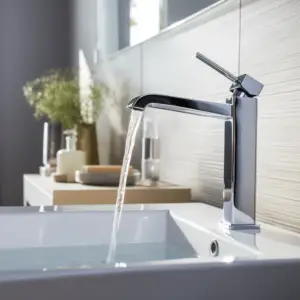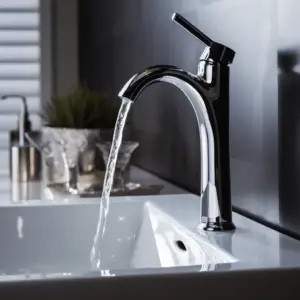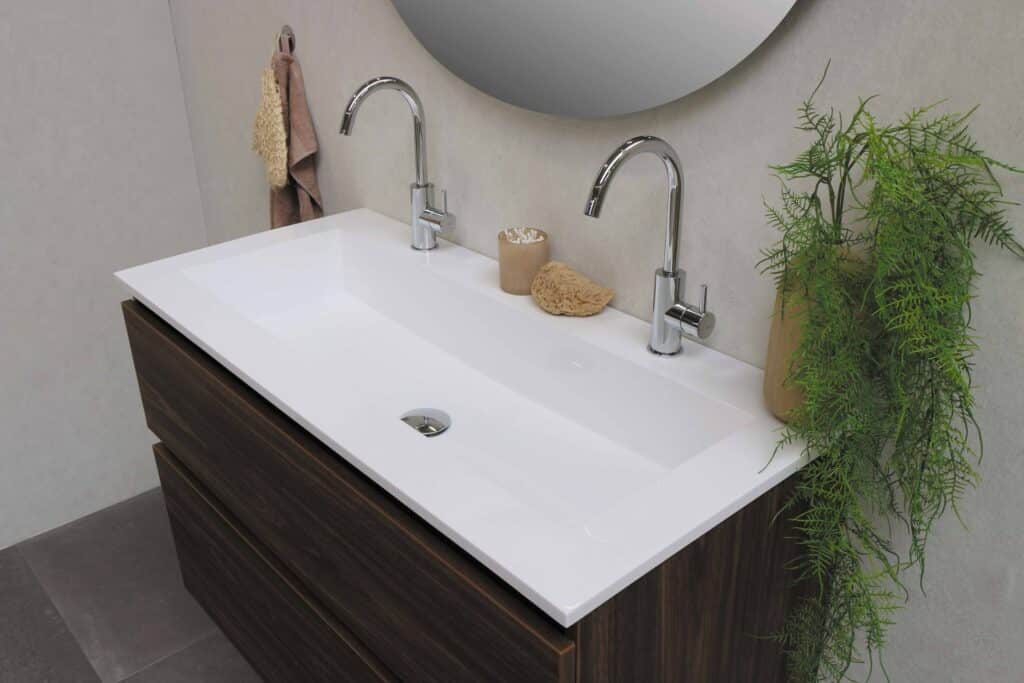You’ve probably seen several articles on the internet talking about how faucets are expensive. When compared to other types of fixtures, like lavatory sinks and bathtubs, they certainly are. But they shouldn’t be. Faucets aren’t that much more complicated nor difficult to make than the other fixtures in your house.
Table of Contents
So why are Faucets So Expensive?

Industry
The bathroom and kitchen industry, and home decorating in general, is expensive. Unfortunately, this encourages retailers to push the prices of some interior products to unreasonable prices.
For example, it is almost impossible to find a faucet for less than $100, especially a quality one that is not made of cheap metal.
Furthermore, faucets are not necessarily fast-moving products as homeowners only require to buy them once every half a decade or so. As a result, the manufacturers and retailers try to get as much from each customer as possible.
However, all is not lost. While faucets have been firmly fixed at above $100 in hardware stores for the longest time, the recent boom of Amazon forced manufacturers to lower their prices to keep up with the global competition that the online shopping giant presents.
Material
Some people think that a faucet is a faucet. They tend to buy one that looks nice and doesn’t cost too much, then expect it to last for 5 years or more. What they don’t realize is that when it comes to brass valves, there can be a tremendous difference in quality between one faucet and the next.
Similarly, faucets selling for $100 or less tend to be made of lighter plastics such as PVC. Plastics are prone to leaking, cracking, or wearing down over time.
Thanks to their longevity, faucets made with brass, copper, bronze, and other more durable materials tend to be more expensive. These products can cost upwards of $1000 but should last a lifetime. Basically, the more money spent, the more expected material lifespan, although this is not always the case.
As a result, it is essential to research what material the faucet is made of before buying it, as opposed to how it looks. A faucet made with solid material will withstand water pressure and long-term wear and tear.
Designs and finishes
This is what appeals to most customers and understandably so. Trendy designs and finishes help your faucet stand out and adds decor to your home.
Unique designs inflate the perceived value of any product. Naturally, manufacturers take advantage of this, and if a faucet boasts a new or more stylish design, they will definitely push the price as high as they can get away with.
Another factor that will affect the price is whether the faucet design is custom-made and handcrafted or hand sketched. Faucets acquired in a hardware store will serve the purpose but will not bring any visual differences to your bathrooms and kitchen compared to your friends’.
Custom faucets priced at over $500 will typically be handcrafted and have engraved visually appealing marks.
The finish is also essential, and this goes back to the faucet’s material. Thin and lighter finishes will often break and need constant replacement. These finishes will be cheap and come in materials like nickel, bronze, and chrome. They are stunning at first but begin to fade after 2 to 3 years of use, and water stains start to become visible.
More high-end finishes are heavier to the touch and stay vibrant for a much longer time. They include brushed bronze, high-end copper, rose gold, and brass.
Functionality
This refers to the unique set of extra features that a specific faucet brings to the table. For instance, older high-end faucets are likely to have an option to turn on hot/cold water.
Modern high-end faucets take this a step further and add exciting features such as:
- lPush/pull lever.
- Wall mounts.
- Water thinner.
- Thermostats on water temperature.
These features boost the functionality of your faucet but do not come cheap. Combined with high-end finishes, quality material, and designs, they are set to force you to dig deeper into your wallet.
Are expensive faucets worth it?
Since we’ve already established why faucets are so expensive, would it be a good idea to spend hundreds of dollars on one?
The answer here is yes, most expensive faucets are totally worth it. This is especially the case for kitchen faucets that you are likely to use several times a day. In addition, a good expensive faucet will last longer and give your kitchen a premium feel.
On the other hand, if you buy a cheap, low-quality faucet for your kitchen, you will need to replace it constantly, which is inconvenient and time-consuming, and more expensive in the long run. On top of that, a cheap faucet will make your kitchen look less premium, even if the rest of the things in the kitchen are high-end.
How much should you spend on a faucet?

High-end faucets are good, but how much is too much to spend on a faucet?
This is entirely dependent on your budget, but where the faucet will be used also plays a role. For example, if you want a bathroom faucet for the second, rarely used, bathroom $100 to $300 should be more than enough to get a good faucet that will serve the purpose. Similarly, if you just want a good, reliable faucet for your kitchen that will get the job done and last a long time, $300 to $400 should get you a good one.
However, if you want a faucet that will stand out and probably match the rest of your kitchen or bathroom’s decor, you should be ready to part with a little more. Custom faucets can range in price from as low as $500 to upwards of $1500 depending on finishes and features. So your budget is really only the limiting factor.
Final thoughts
Faucets are an essential addition to any home. While many of them are a bit on the expensive side, they are a worthwhile investment.


